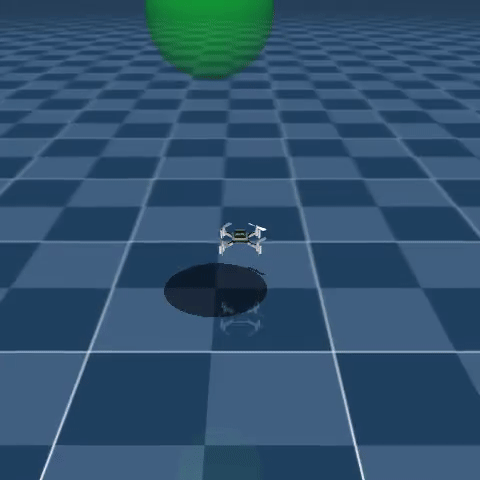Ever wanted to bring a T-Rex back to life? Well, digitally at least! In this post, we'll explore how to create a simplified T-Rex model in MuJoCo, a powerful physics simulator, and then lay the groundwork for using reinforcement learning (RL) to teach it how to walk. This isn't just a fun project; it's a fantastic way to dive into the world of robotics, simulation, and AI.
Step 1: Building Our Digital Dino (The MuJoCo Model)
MuJoCo uses XML files to define models. We'll start with a T-Rex model designed for bipedal (two-legged) locomotion. This is crucial because it gives our digital dinosaur the potential to walk. Here's the XML (save it as, for example, trex.xml):
XML
<mujoco model="T-Rex">
<compiler angle="degree" coordinate="local" inertiafromgeom="true"/>
<default>
<joint limited="true" damping="1" armature="0.1"/>
<geom conaffinity="1" condim="3" friction="1 0.5 0.5" margin="0.01" solref="0.02 1"/>
</default>
<worldbody>
<light directional="true" diffuse="0.8 0.8 0.8" pos="0 0 5" dir="0 0 -1"/>
<geom type="plane" size="50 50 0.1" rgba="0.2 0.3 0.4 1"/>
<body name="torso" pos="0 0 1.5"> <camera name="track" mode="track" pos="0 -5 2" xyaxes="1 0 0 0 1 0"/>
<joint type="free"/> <geom name="torso_geom" type="capsule" fromto="0 0 0 0 0 -0.7" size="0.3"/> <body name="left_thigh" pos="0.2 0 -0.7">
<joint name="left_hip" type="hinge" pos="0 0 0" axis="0 1 0" range="-90 45"/>
<geom name="left_thigh_geom" type="capsule" fromto="0 0 0 0 0 -0.5" size="0.15"/>
<body name="left_shin" pos="0 0 -0.5">
<joint name="left_knee" type="hinge" pos="0 0 0" axis="0 1 0" range="-160 0"/>
<geom name="left_shin_geom" type="capsule" fromto="0 0 0 0 0 -0.6" size="0.1"/>
<body name="left_foot" pos="0 0 -0.6">
<joint name="left_ankle" type="hinge" pos="0 0 0" axis="0 1 0" range="-45 45"/>
<geom name="left_foot_geom" type="capsule" fromto="0 0 0 0.2 0 -0.1" size="0.08"/>
<body name="left_toe" pos="0.2 0 -0.1">
<joint name="left_toe_joint" type="hinge" axis="0 1 0" range="-20 45"/>
<geom name="left_toe_geom" type="capsule" fromto="0 0 0 0.2 0 0" size="0.06"/>
</body>
</body>
</body>
</body>
<body name="right_thigh" pos="-0.2 0 -0.7">
<joint name="right_hip" type="hinge" pos="0 0 0" axis="0 1 0" range="-90 45"/>
<geom name="right_thigh_geom" type="capsule" fromto="0 0 0 0 0 -0.5" size="0.15"/>
<body name="right_shin" pos="0 0 -0.5">
<joint name="right_knee" type="hinge" pos="0 0 0" axis="0 1 0" range="-160 0"/>
<geom name="right_shin_geom" type="capsule" fromto="0 0 0 0 0 -0.6" size="0.1"/>
<body name="right_foot" pos="0 0 -0.6">
<joint name="right_ankle" type="hinge" pos="0 0 0" axis="0 1 0" range="-45 45"/>
<geom name="right_foot_geom" type="capsule" fromto="0 0 0 0.2 0 -0.1" size="0.08"/>
<body name="right_toe" pos="0.2 0 -0.1">
<joint name="right_toe_joint" type="hinge" axis="0 1 0" range="-20 45"/>
<geom name="right_toe_geom" type="capsule" fromto="0 0 0 0.2 0 0" size="0.06"/>
</body>
</body>
</body>
</body>
<body name="left_upper_arm" pos="0.3 0 -0.2">
<joint name="left_shoulder" type="hinge" pos="0 0 0" axis="0 1 0" range="-45 90"/>
<geom name="left_upper_arm_geom" type="capsule" fromto="0 0 0 0 0 -0.3" size="0.07"/>
<body name="left_lower_arm" pos="0 0 -.3">
<joint name="left_elbow" type="hinge" axis="0 1 0" range="0 90"/>
<geom type="capsule" fromto="0 0 0 0 0 -0.3" size="0.05"/>
</body>
</body>
<body name="right_upper_arm" pos="-0.3 0 -0.2">
<joint name="right_shoulder" type="hinge" pos="0 0 0" axis="0 1 0" range="-45 90"/>
<geom name="right_upper_arm_geom" type="capsule" fromto="0 0 0 0 0 -0.3" size="0.07"/>
<body name="right_lower_arm" pos="0 0 -.3">
<joint name="right_elbow" type="hinge" axis="0 1 0" range="0 90"/>
<geom type="capsule" fromto="0 0 0 0 0 -0.3" size="0.05"/>
</body>
</body>
<body name="neck" pos="0 0 -0.1"> <joint name="neck_joint" type="hinge" axis="0 1 0" range="-45 45"/>
<geom name="neck_geom" type="capsule" fromto="0 0 0 0 0 -0.4" size="0.1"/>
<body name="head" pos="0 0 -0.4">
<joint name="head_joint" type="hinge" axis="0 1 0" range="-20 20"/>
<geom name="head_geom" type="sphere" size="0.2"/> </body>
</body>
<body name="tail_base" pos="0 0 -0.7">
<joint name="tail1" type="hinge" axis="0 1 0" range="-20 20"/>
<geom name="tail_base_geom" type="capsule" fromto="0 0 0 0 0 -0.4" size="0.2"/>
<body name="tail_mid" pos="0 0 -0.4">
<joint name="tail2" type="hinge" axis="0 1 0" range="-15 15" />
<geom name="tail_mid_geom" type="capsule" fromto="0 0 0 0 0 -0.4" size="0.15"/>
<body name="tail_end" pos="0 0 -0.4">
<joint name="tail3" type="hinge" axis="0 1 0" range="-10 10"/>
<geom name="tail_end_geom" type="capsule" fromto="0 0 0 0 0 -0.4" size="0.1"/>
</body>
</body>
</body>
</body>
</worldbody>
<actuator>
<motor joint="left_hip" gear="50" ctrlrange="-90 45" ctrllimited="true"/>
<motor joint="left_knee" gear="50" ctrlrange="-160 0" ctrllimited="true"/>
<motor joint="left_ankle" gear="30" ctrlrange="-45 45" ctrllimited="true"/>
<motor joint="left_toe_joint" gear="20" ctrlrange="-20 45" ctrllimited="true"/>
<motor joint="right_hip" gear="50" ctrlrange="-90 45" ctrllimited="true"/>
<motor joint="right_knee" gear="50" ctrlrange="-160 0" ctrllimited="true"/>
<motor joint="right_ankle" gear="30" ctrlrange="-45 45" ctrllimited="true"/>
<motor joint="right_toe_joint" gear="20" ctrlrange="-20 45" ctrllimited="true"/>
<motor joint="left_shoulder" gear="20" ctrlrange="-45 90" ctrllimited="true"/>
<motor joint="left_elbow" gear="15" ctrlrange="0 90" ctrllimited="true"/>
<motor joint="right_shoulder" gear="20" ctrlrange="-45 90" ctrllimited="true"/>
<motor joint="right_elbow" gear="15" ctrlrange="0 90" ctrllimited="true"/>
<motor joint="neck_joint" gear="20" ctrlrange="-45 45" ctrllimited="true"/>
<motor joint="head_joint" gear="10" ctrlrange="-20 20" ctrllimited="true"/>
<motor joint="tail1" gear="30" ctrlrange="-20 20" ctrllimited="true"/>
<motor joint="tail2" gear="20" ctrlrange="-15 15" ctrllimited="true"/>
<motor joint="tail3" gear="10" ctrlrange="-10 10" ctrllimited="true"/>
</actuator>
</mujoco>
Let's break down the key parts:
<mujoco model="T-Rex">: The root element, giving our model a name.<compiler ...>: Sets some global options for the simulation.inertiafromgeom="true"is generally a good idea.<default> ... </default>: Defines default properties for joints and geometries, making the XML less repetitive.<worldbody> ... </worldbody>: Contains everything that's visually part of the simulation.<light ...>: Adds a light source for better visualization.<geom type="plane" ...>: Creates the ground.<body> ... </body>: Defines a body part. Bodies are nested to create a hierarchical structure (e.g., the thigh is the parent of the shin).joint: Defines how a body part can move relative to its parent.type="hinge"simulates joints like knees and elbows.rangelimits the joint's motion – very important for realistic movement. Thefreejoint for the torso allows for translation and rotation.geom: Defines the shape of the body part.type="capsule"is good for limbs, andtype="sphere"is used for the head.
<actuator> ... </actuator>: This is where we define the "muscles" of our T-Rex.motorcreates a motor that applies force to a joint.gearsimulates a gear ratio.ctrlrangeandctrllimitedare used to restrict the control inputs of the motor.
Step 2: Setting up the MuJoCo Environment (Python)
We'll use Python and the mujoco library to interact with our model. First, install MuJoCo:
Bash
pip install mujoco
Now, let's write a basic script to load and visualize the model:
Python
import mujoco
import numpy as np
import mediapy as media # For displaying the simulation
# Load the XML model
model = mujoco.MjModel.from_xml_path("trex.xml")
data = mujoco.MjData(model)
# Create a renderer
renderer = mujoco.Renderer(model)
# Simulation loop
frames = []
mujoco.mj_resetData(model, data) # Reset the simulation
while data.time < 5: # Run for 5 seconds
mujoco.mj_step(model, data) # Advance the simulation by one step
# Render the scene
renderer.update_scene(data)
frames.append(renderer.render())
# Display the simulation as a video
media.show_video(frames, fps=1/model.opt.timestep)
print("Simulation Complete")
This script does the following:
- Loads the model:
mujoco.MjModel.from_xml_path("trex.xml")loads your XML file. - Creates data:
mujoco.MjData(model)creates a data structure to store the simulation state. - Creates Renderer: This will be used to render and save each frame of the simulation.
- Simulation Loop:
mujoco.mj_resetData(model, data): Resets the simulation to its initial state.mujoco.mj_step(model, data): This is the core function. It advances the physics simulation by one timestep.renderer.update_scene(data)andrenderer.render(): Renders the scene from the default camera.frames.append(...): Appends current frame to frames array to create video
- Display Video: Uses
mediapyto display the video using the collected frames.
Run this script. You should see your T-Rex model in MuJoCo, but it will just fall to the ground – we haven't taught it to walk yet!
Step 3: The Reinforcement Learning Magic
This is where things get exciting (and challenging). Reinforcement learning (RL) is a type of machine learning where an "agent" (our T-Rex) learns to interact with an "environment" (the MuJoCo simulation) to achieve a goal (walking). The agent learns by trial and error, receiving "rewards" for actions that get it closer to the goal and "penalties" for actions that don't.
Here's a high-level overview of the RL process:
- Observation: The agent observes the current state of the environment. This might include the positions and velocities of all its joints, and contact forces.
- Action: Based on its observation, the agent chooses an action. In our case, this means setting the target angles (or torques) for each of the T-Rex's motors.
- Reward: The environment provides a reward based on how good the action was. A good reward function for walking might include:
- Positive reward for forward movement.
- Small negative reward for using too much energy (to encourage efficiency).
- Large negative reward for falling over.
- State Transition: The environment updates its state based on the agent's action. This is where MuJoCo's physics engine comes in.
- Repeat: Steps 1-4 are repeated until the agent learns a good policy (a strategy for choosing actions).
Choosing an RL Algorithm
Several RL algorithms could be used, including:
- Proximal Policy Optimization (PPO): A popular and relatively stable algorithm. It's a good starting point.
- Soft Actor-Critic (SAC): Another popular choice, often good for continuous action spaces (like our motor controls).
- TD3 (Twin Delayed Deep Deterministic Policy Gradient): A good option for continuous control tasks.
Additional Learning Materials
- Reinforcement Learning for Robust Parameterized Locomotion Control of Bipedal Robots
- Getting Started with Stable Baselines3 Python Reinforcement Learning Library | MuJoCo Humanoid-v4


